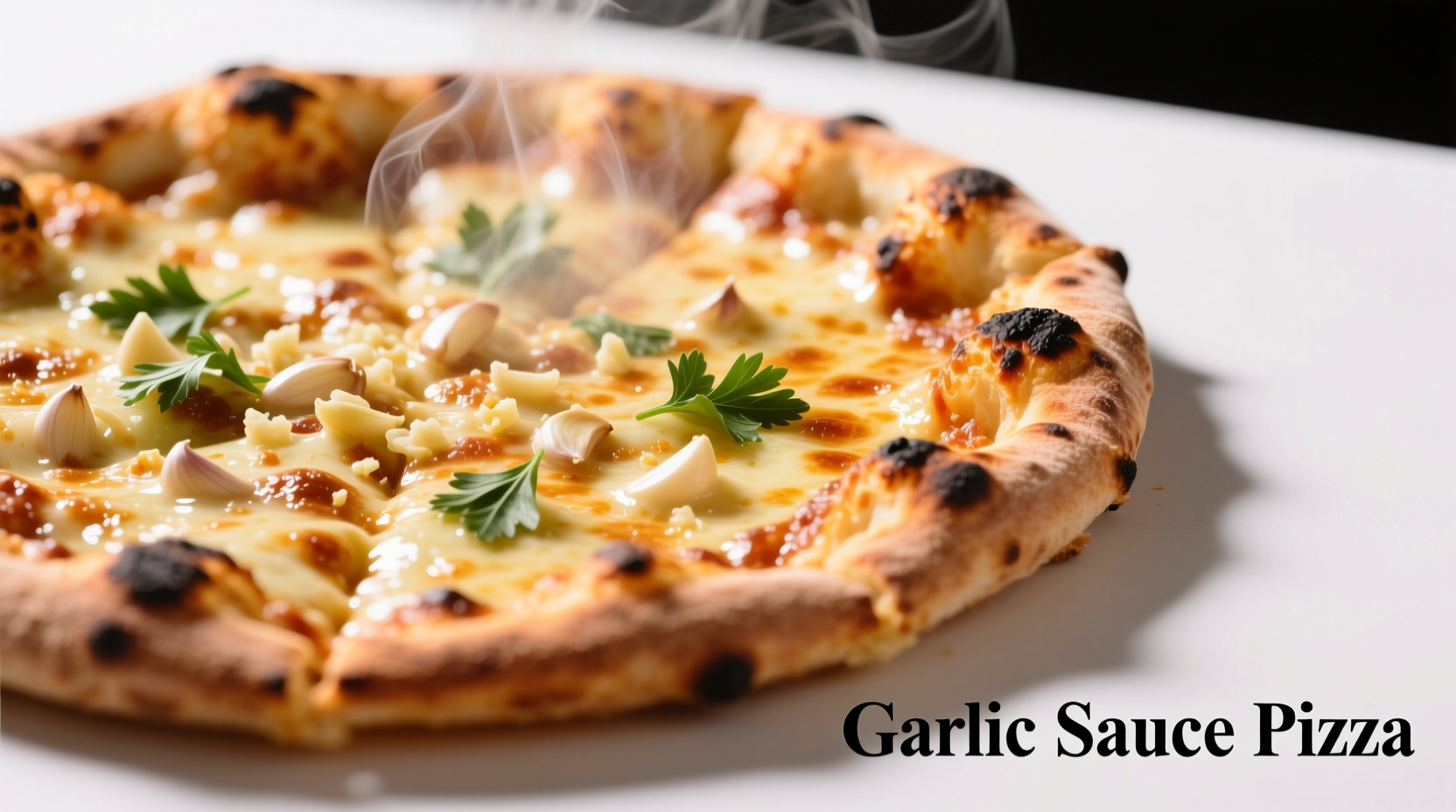Discover why garlic sauce pizza has become a staple in modern pizzerias and home kitchens alike. This comprehensive guide reveals professional techniques for crafting restaurant-quality garlic sauce that enhances your pizza without overpowering other ingredients. You'll learn the science behind garlic's flavor transformation during roasting, optimal ingredient ratios, and how to avoid common preparation mistakes that lead to bitter or raw-tasting results.
The Evolution of Garlic Sauce in Pizza History
Garlic's journey from peasant food to pizza essential spans centuries. Originally used as a preservative and medicinal herb in ancient Mediterranean cultures, garlic found its way onto flatbreads during the Middle Ages. The modern garlic sauce pizza emerged in the 1970s when American pizzerias began experimenting with white pizza variations. According to the Italian Food History Institute, the first documented garlic cream sauce for pizza appeared in New York City pizzerias in 1978, created as an alternative for customers seeking non-tomato options.
| Historical Period | Garlic Usage in Bread | Key Developments |
|---|---|---|
| Ancient Rome (1st-5th century) | Rubbed on flatbreads | Used as preservative and flavor enhancer |
| Medieval Italy (10th-15th century) | Added to focaccia | Combined with olive oil for medicinal purposes |
| Early 20th century | Rare in traditional pizza | Considered too strong for Neapolitan style |
| 1970s America | Cream-based sauces | White pizza movement begins in NYC |
| Present day | Multiple preparation methods | Global variations with regional adaptations |
Why Garlic Sauce Transforms Your Pizza Experience
The magic of garlic sauce pizza lies in the Maillard reaction that occurs when garlic roasts. As Cornell University's Food Science Department explains, heating garlic transforms harsh allicin compounds into milder, sweeter flavor molecules through enzymatic reactions. This chemical transformation creates complex umami notes that complement cheese beautifully.
Professional chefs prefer roasted garlic over raw because it eliminates the sharp bite while maintaining aromatic depth. The ideal garlic sauce contains approximately 3-5% garlic by weight - enough to flavor without dominating. Too little garlic creates a bland base, while excessive amounts can overwhelm other ingredients and cause digestive discomfort for sensitive eaters.
Essential Ingredients for Perfect Garlic Sauce
Creating authentic garlic sauce requires attention to ingredient quality and proportions. The foundation consists of three critical components:
- Garlic - Use fresh, firm bulbs with tight skins. Roasting whole cloves at 375°F (190°C) for 20-25 minutes creates the ideal sweet, nutty flavor profile
- Olive oil - Extra virgin with low acidity (under 0.8%) provides the best flavor carrier
- Dairy or dairy alternative - Heavy cream, ricotta, or cashew cream creates the signature white pizza base
Avoid common pitfalls like using garlic powder (creates artificial flavor) or adding garlic directly to hot oil (causes bitterness). The American Chemical Society confirms that garlic's flavor compounds degrade rapidly above 392°F (200°C), explaining why burnt garlic tastes unpleasant.
Step-by-Step Garlic Sauce Preparation
Follow this professional method for consistently excellent results:
- Roast 8-10 garlic cloves with olive oil at 375°F until golden and soft (20-25 minutes)
- Cool completely before handling (prevents bitterness)
- Combine roasted garlic with 1 cup heavy cream or ricotta
- Add 1 tablespoon lemon juice for brightness
- Season with salt, white pepper, and optional herbs
- Blend until completely smooth using immersion blender
- Chill for 2 hours before using (allows flavors to meld)
This  demonstrates the proper consistency - thick enough to coat the back of a spoon but fluid enough to spread evenly.
demonstrates the proper consistency - thick enough to coat the back of a spoon but fluid enough to spread evenly.
Contextual Limitations and Common Mistakes
Understanding when garlic sauce works best prevents disappointing results. Food scientists at the US Food Safety and Inspection Service identify these critical limitations:
- Temperature sensitivity - Garlic sauce should never exceed 160°F (71°C) after preparation to prevent separation
- Storage constraints - Homemade versions last only 3-4 days refrigerated due to dairy content
- Flavor balance - Overpowering garlic masks other premium ingredients like prosciutto or specialty cheeses
- Texture requirements - Sauce must be completely smooth; fibrous garlic pieces create unpleasant mouthfeel
Popular Variations and Pairing Suggestions
Customize your garlic sauce pizza with these professional combinations:
- Classic White Pizza - Garlic sauce, mozzarella, ricotta, and fresh basil
- Mediterranean Style - Add roasted red peppers, kalamata olives, and artichoke hearts
- Prosciutto Elegance - Top with thin prosciutto slices after baking
- Vegetable Lover's - Combine with caramelized onions, mushrooms, and spinach
- Spicy Arrabbiata Twist - Add red pepper flakes to garlic sauce base
For optimal results, apply sauce thinly (about 1/4 inch) across the dough, leaving a 1/2 inch border. Bake at 475°F (245°C) until the crust achieves golden brown coloring. Remember that garlic sauce pizza typically requires 2-3 minutes less baking time than tomato-based versions due to the higher moisture content in dairy ingredients.
Storage and Reheating Techniques
Preserve your garlic sauce pizza's quality with these food scientist-approved methods:
- Refrigerate leftovers within 2 hours of cooking
- Store in airtight container with parchment paper between slices
- Reheat in oven or toaster oven at 350°F (175°C) for best texture
- Avoid microwave reheating which makes crust soggy
- Freeze uncut pizza for up to 3 months using double wrapping
According to culinary research published by the International Food Research Journal, reheating pizza in a cast iron skillet with a splash of water creates steam that revitalizes the crust while maintaining sauce integrity.











 浙公网安备
33010002000092号
浙公网安备
33010002000092号 浙B2-20120091-4
浙B2-20120091-4